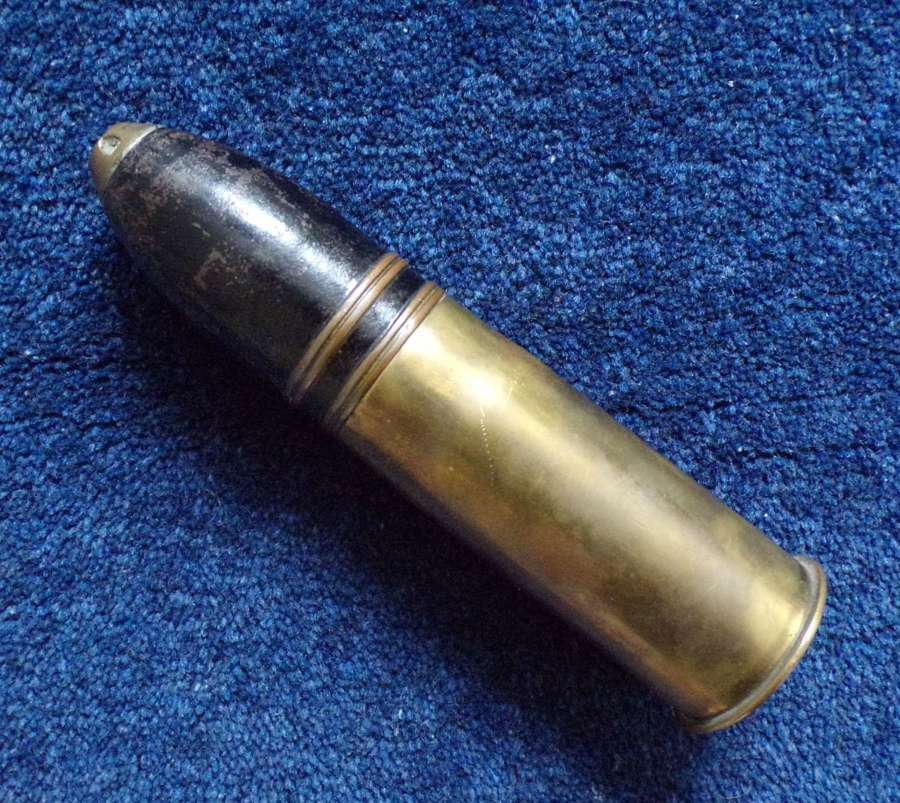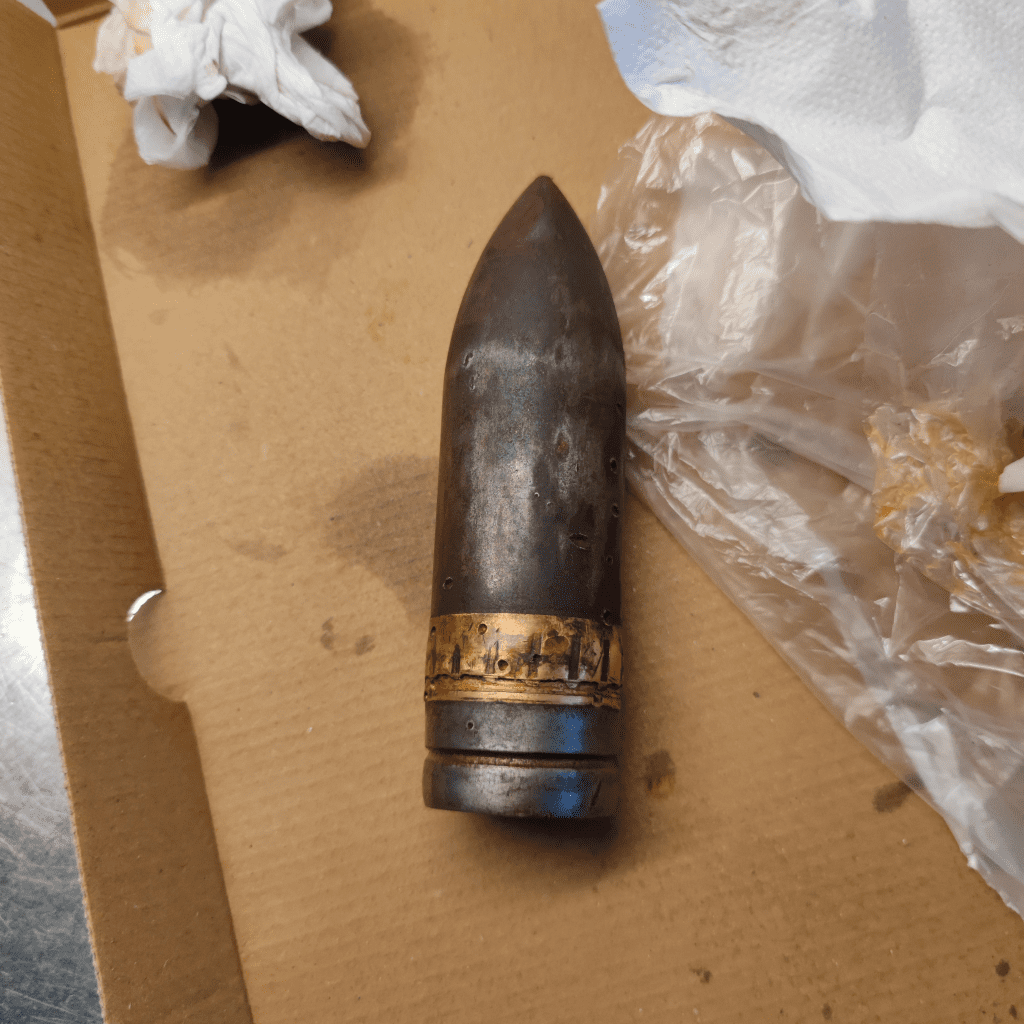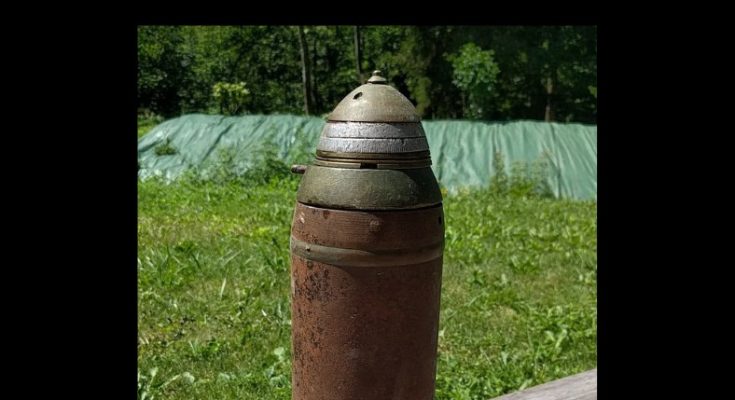Sometimes, history doesn’t need to be found in museums or books—it’s right under our noses, tucked away in forgotten corners. That’s exactly what happened when my brother and I stumbled across a mysterious object in our grandpa’s garage in France. It wasn’t just any dusty artifact. What we found was an incredible piece of history that connected us to one of the most pivotal moments of the 20th century.

An Afternoon in a Time Capsule
Grandpa’s garage had always been an intriguing place, filled with odds and ends that seemed to span centuries. Shelves sagged under the weight of rusted tools, old jars of nails, and unrecognizable knick-knacks. The dim sunlight filtering through the dirty windows gave the space a nostalgic charm, making it feel like a treasure chest waiting to be unlocked.
While rummaging through some old newspapers and tin containers, we found something that stopped us in our tracks. It was a cylindrical metal object—heavy, rusted, and oddly ominous. The faint markings etched along its surface, along with its sharp, pointed tip, hinted at a story far more complex than anything else in the garage.
The First Clues: A Date and Markings
Turning the object over in our hands, we noticed a date faintly engraved on its surface: 1915. Suddenly, this wasn’t just some random metal tool. This was a relic from over a century ago. The weight of its significance hit us immediately. But it also raised serious questions. What was it? Was it dangerous? Could it be… live?
We weren’t about to take any chances, so we set it down carefully on a workbench. After snapping a few photos, we turned to the internet for answers. The results were both thrilling and relieving—we had found an inert 1915 British 13-pounder artillery shell.
What Is a 13-Pounder Artillery Shell?
For those unfamiliar, the British QF (Quick Firing) 13-pounder was a field gun used extensively by the British Army during World War I. Known for its mobility and rapid rate of fire, it was a critical tool in both offensive and defensive operations on the front lines. The shells fired from these guns, including the one we discovered, were designed to deliver devastating effects during battle.
Our shell, stamped with a 1915 date, was manufactured during one of the war’s most intense years. Each shell was crafted with care, marked with details such as the production date, manufacturing location, and sometimes even the batch number. These markings served both as identifiers and as a testament to the industrial precision of wartime manufacturing.

Inert but Significant: Why This Shell Matters
The word “inert” was a huge relief. It meant the shell had been disarmed, rendering it completely safe to handle. However, learning that it was harmless didn’t diminish the gravity of holding it. This wasn’t just a piece of metal—it was a tangible connection to a war that shaped the modern world.
The shell told a silent story of the soldiers who fired it, the factories that produced it, and the battles it witnessed. Its very existence was a reminder of the resilience, sacrifice, and ingenuity of the people who lived through one of history’s darkest times.
How Did It End Up Here?
The biggest mystery we couldn’t solve was how the shell ended up in our grandpa’s garage in the first place. Had a relative brought it back as a war souvenir? Was it purchased at an antique market and forgotten over the years? Or had it been passed down through the family without anyone realizing its historical importance?
Grandpa didn’t have any clear recollection of its origins. It was just another item in his collection of tools and trinkets. But that only made the discovery more intriguing. This shell wasn’t just a relic; it was a puzzle piece in a story we might never fully uncover.

Preserving the Past: Cleaning and Displaying the Shell
Once we knew what it was, we decided it deserved better than being buried under layers of dust. Using gentle cleaning techniques to avoid damaging the surface or its markings, we brought the shell back to life. The engraved date and details became more visible, adding to its historical charm.
We gave it a special place on a sturdy wooden shelf in the garage, where it now sits as a centerpiece. Every time we glance at it, we’re reminded of the incredible history it represents and the unexpected adventure of finding it.
The Human Connection to History
Finding the 1915 British 13-pounder shell wasn’t just about discovering an old object—it was about connecting with the past in a deeply personal way. This piece of history wasn’t sitting behind glass in a museum. It was in our hands, tangible and real, with all its imperfections and untold stories.
It reminded us that history is all around us, waiting to be found. It’s in our attics, our garages, and even in the things we overlook every day. Objects like this shell bridge the gap between us and the people who lived through monumental events. They remind us that history isn’t just about dates and facts—it’s about human experiences, resilience, and survival.
A Relic with a Message
As the shell sits proudly in our grandpa’s garage, it serves as more than just a historical artifact. It’s a reminder of the importance of curiosity and the value of preserving stories. Every scratch and dent on its surface tells a tale, and every marking carries the weight of history.
The shell also taught us a lesson about the unexpected joys of exploration. What started as a simple afternoon of rummaging through clutter turned into a journey through time. It reminded us to slow down, take a closer look, and appreciate the stories hidden in the everyday objects around us.
Conclusion
Our discovery of the 1915 British 13-pounder shell in grandpa’s garage was more than just an exciting find—it was a connection to the past and a reminder of the power of history. This seemingly unassuming object carried with it the weight of war, the precision of craftsmanship, and the resilience of the human spirit.
Now, it stands as a testament to the importance of preserving and honoring history. Whether it’s tucked away in a garage, displayed in a museum, or passed down through generations, every piece of the past has a story to tell. And sometimes, the most profound discoveries come from the places we least expect.



